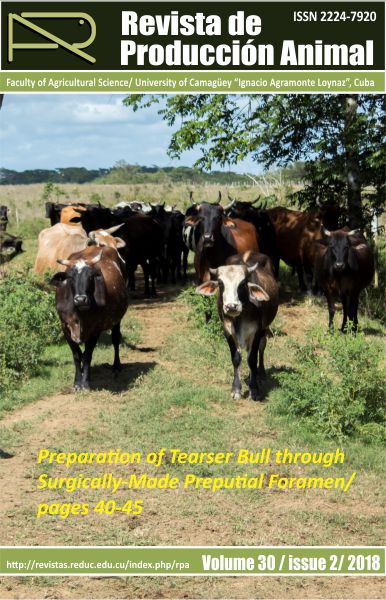Forage Production and Nutritional Quality of Angleton climacuna (Dichanthium annulatum-Forssk-Stapf) for Hay, in La Dorada (Caldas)
Resumen
This study was made on the Rancho Claro Farm, municipality of Doradas (Caldas). The aim was to determine the effects of cutting age on forage production and nutritional quality of angleton climacuna (Dichanthium annulatum) used for hay production. The study was made in previously chosen grassland; 21 lots of 100 m2 were prepared, and the cutting ages were set at random (40, 50, 60, 70, 80, 90, and 100 days). A completely randomized design was used with three replications per treatment. The age effect on production and quality was analyzed through analysis of variance and the Tukey´s test. Regression analysis and the Pearson test were made to determine correlation. Forage production was observed to vary between 5.8 and 23.6 T Ha-1 of FM. The highest protein value was observed 40 days later (7.9%), and it was higher than 5% until the 70th day. The dry matter (DM) percent and neutral detergent fiber (NDF) increased with age; the highest contents were observed after 80 days. The crude energy (CE) values were similar in all the ages. Quality decreased with age, but forage production increased. It was concluded that forage production and quality can be determined at any age, provided that height and forage production values per m2 are known at initial growth stages.
Descargas
Los autores de los artículos publicados en RPA retienen los derechos de autor de su trabajo, de marca y patente, y también sobre cualquier proceso o procedimiento descrito en el artículo, así como a compartir, copiar, distribuir, ejecutar y comunicar públicamente el artículo publicado en la RPA o cualquier parte de aquel siempre que indiquen la fuente de publicación (autores del trabajo, revista, volumen, número y fecha), pero están de acuerdo en que la revista publique los trabajos bajo una licencia Creative Commons.
![]() Licencia Attribution-NonCommercial 4.0 International (CC BY-NC 4.0)
Licencia Attribution-NonCommercial 4.0 International (CC BY-NC 4.0)






































